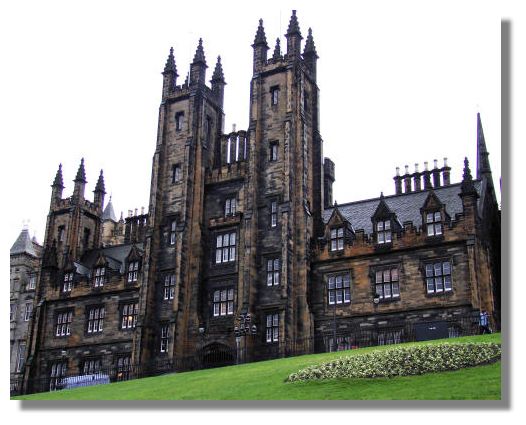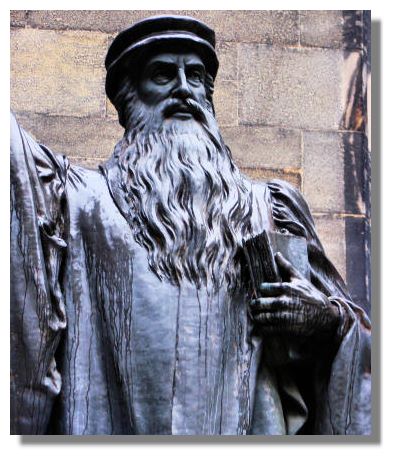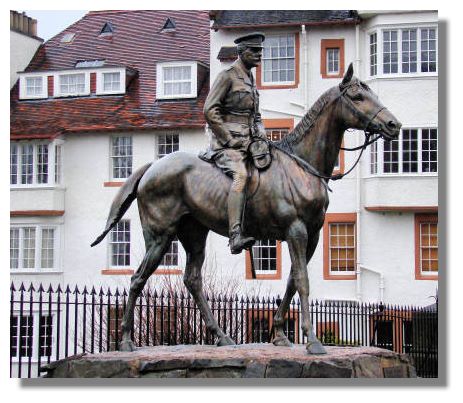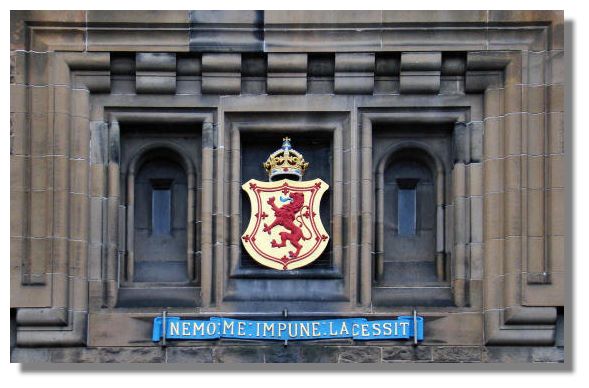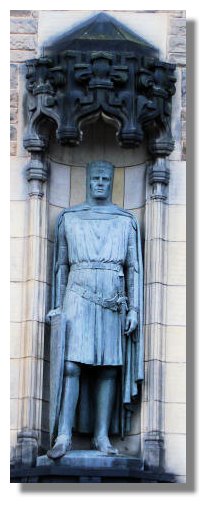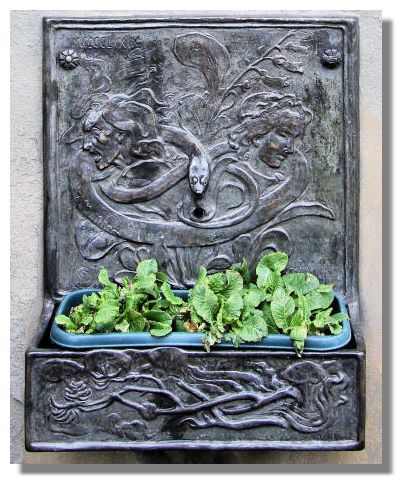Each week the Rampant Scotland Newsletter includes a number of photographs which illustrate the weather and the seasons, plus the flora and fauna of the current week around Scotland. This separate "colour supplement" displays some more pictures, in a larger format. Here is this week's crop of Scottish views!
The Assembly Hall in Edinburgh is located near Edinburgh Castle, overlooking Princes Street Gardens and the National Gallery of Scotland. It was built in 1858 to 1863, to a design by Sir William Playfair, as colleges and offices by the Free Church of Scotland. The soaring neo-Jacobean architecture creates a skyline of towers, turrets and windows. After the reunion of the United Free Church and the Church of Scotland, it was used each year for the church's General Assembly and as the Faculty of Divinity of the University of Edinburgh. It was used to house the Scottish Parliament when it was re-convened in 1999.
Within the courtyard of the Assembly Hall (above) stands an imposing statue of John Knox (1513-1572), arm upraised in a suitably declamatory pose. Knox was influenced by the Protestant ideas of Calvin in Switzerland. He came back to Scotland in 1559 and became minister at St Giles in Edinburgh. In 1560 the Scottish Parliament, with guidance from Knox, drew up the "Confession of Faith" which established Protestantism and government of the Church of Scotland along the lines he had learned in Geneva.
The fine equestrian statue of Earl Haig, the commander-in-chief of the British army from December 1915 to the end of the First World War, stands on the esplanade (forecourt) of Edinburgh Castle. He was regarded as a calm optimist but because of his shyness he never addressed his troops and indeed was not often seen by them. His statue in Edinburgh was donated by a Bombay parsee, Sir Dhumjibhoy Bomanzi.
The lion rampant and the motto "Nemo Me Impune Lacessit" are displayed above the entrance to Edinburgh Castle. The Latin can be translated roughly as "Nobody provokes me unpunished" but is often rendered in Scots as "Wha daur meddle wi me." The motto is used on the Royal coat of arms in Scotland. It is also the motto of the Order of the Thistle, the Scottish chivalrous order and of the British Army regiments The Royal Regiment of Scotland and Scots Guards.
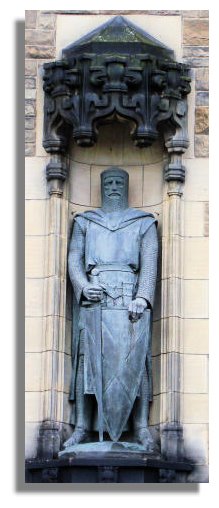
On either side of the entrance (over a drawbridge) to Edinburgh Castle are these fine statues of the Scottish heroes King Robert the Bruce (on the left) and Sir William Wallace. The bronze statues were placed on niches in the gatehouse of the castle in 1929.
Often overlooked by the many tourists who visit Edinburgh Castle, this bronze fountain at the eastern end of the esplanade is near the site on which hundreds of "witches" were burned at the stake in the 16th century. The last witch was hanged in Scotland in 1728. The design of the memorial fountain incorporates a wicked head and a serene head to signify that while some used their knowledge for evil purposes, others were misunderstood. The serpent also has a dual significance of evil and wisdom, while the spray of Foxglove flowers further emphasises the dual purpose of many common objects. Since water no longer comes from the fountain, the trough has been filled (rather incongruously) with a plastic plant trough and primrose plants.If you want to look back at earlier editions of this Colour Supplement, there is an Index Page
